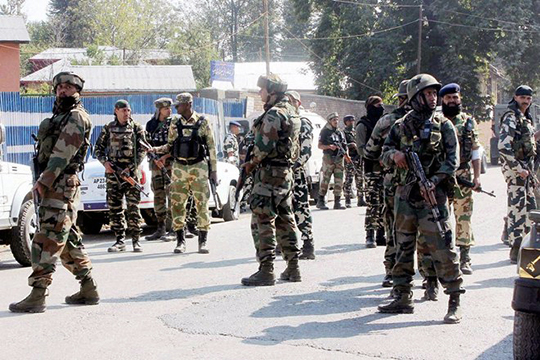New Delhi, Sep 29: Seven terror launch pads were targeted across the LoC by special forces of the Indian Army during the 'surgical strike' overnight in which heliborne and ground forces were used, defence sources said today.

The sources said the operation began at around mid-night last night and ended at around 4:30 AM this morning. The terror launch pads targeted were in the range of 2 to 3km from the Line of Control(LoC) and were under surveillance for over one week, the sources said. They said the operation was a combination of heliborne and ground forces.
The announcement of the sudden action by the army was made today by the DGMO Lt Gen Ranbir Singh, 11 days after the terror strike by Pakistan-based terror outfit JeM on an Indian army camp in Uri in Kashmir over which Prime Minister Narendra Modi said the attackers will not go "unpunished" and that the sacrifice of 18 jawans will not go in vain.
"Based on very credible and specific information which we received yesterday that some terrorist teams had positioned themselves at launch pads along the Line of Control with an aim to carry out infiltration and terrorist strikes in Jammu & Kashmir and in various other metros in our country, the Indian army conducted surgical strikes last night at these launch pads." Gen Singh told a news conference during which External affairs ministry spokesman Vikas Swarup was also present. The strikes were carried out across the LoC, he said.
Pakistan, however,dismissed as "fabrication of truth" India's claim that it has conducted a military operation across the LoC to target terrorist launching pads, terming it as a "quest" by India to create media hype by rebranding cross-border fire as surgical strike.
"There has been no surgical strike by India, instead there had been cross border fire initiated and conducted by India which is existential phenomenon," Pakistan army said in a statement in Islamabad.
The announcement of the strikes by the Indian army was made soon after Prime Minister Narendra Modi chaired a meeting of Cabinet Committee on Security(CCS).
Prime Minister Modi informed President Pranab Mukherjee, J and K Chief Minister Mehbooba Mufti and former Premier Mahmohan Singh among others on the surgical strikes.
Details of duration of the surgical strikes or when exactly it was conducted or the places targeted were not immediately given.
Sources said that at least two terror camps were struck during the surgical strikes. Sharing details, Gen Singh said the operations were basically focused to ensure that the terrorists do not succeed in their design of infiltration and carrying out destruction and endangering the lives of citizens of our country.
"During these counter terrorist operations, significant casualties have been caused to the terrorists and those who are trying to support them.
"The operations aimed at neutralizing the terrorists have since ceased. We do not have any plans for continuation of further operations. However the Indian armed forces are fully prepared for any contingency that may arise," he said.
The DGMO said he had spoken to the Pakistani Director General of Military Operations and explained India's concerns and also shared with him details of the operation.
"It is India's intention to maintain peace and tranquility in the region, but we can certainly not allow the terrorists to operate across the Line of Control with impunity and attack the citizens of our country.
"In line with Pakistan's commitment made in January 2004 not to allow its soil or territory under its control for any terrorist activities against India, we expect the Pakistani army to cooperate with us with a view to erase this menace of terrorism from our region."





Comments
56 inch Chest Rocks, right decision by indian army, proud of indian army and thanks to indian (Modi) government for understanding the feelings of people of india. Jai ho, Jai hind, Vande matharam.
Add new comment